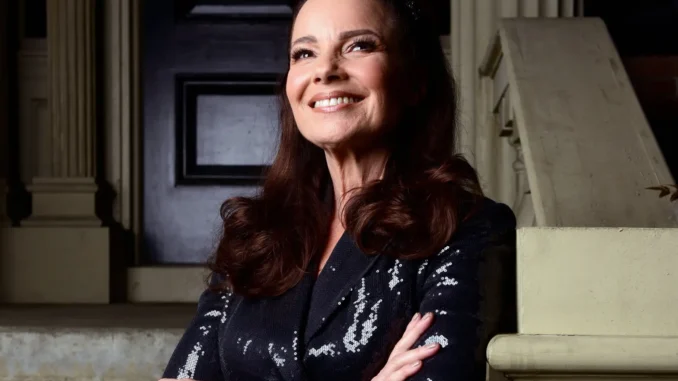
Fran Drescher Gets Candid About the SAG Deal, AI, and Vaccine Mandates
SAG-AFTRA national president opens up to Rolling Stone about the strike-ending deal with the studios and her Barbara Walters-sized aspirations
AFTER FOUR LONG months marching on Hollywood picket lines, bargaining inside hostile bargaining rooms, and giving Buddhist sermons, Fran Drescher can finally exhale.
Through the 118-day actors’ strike, The Nanny star turned SAG-AFTRA national president, joined by SAG-AFTRA chief negotiator Duncan Crabtree-Ireland, has served as the face of the 160,000-strong union and says she uses the Nineties sitcom’s message around unity and acceptance in her leadership. “I can be exactly who I am,” she says in her raspy Queens accent, “and still rock a red lip and hold a plushie toy.”
On Dec. 5, Screen Actors Guild members approved multi-year contracts with the Hollywood studios and streamers, or the Association of Motion Picture and Television Producers (AMPTP), by 78.33 percent, with 21.67 percent dissenting. Lauded as the “billion-dollar deal,” which will run through June 30, 2026, actors will receive residual and minimum wage increases, along with certain AI protections.
But Drescher has not been free from criticism. Before the strike began in July, she faced backlash for cheesing next to Kim Kardashian during a Dolce & Gabbana promotional trip and following the strike’s end on Nov. 8, actors spoke out on the then-tentative deal’s AI provisions.
Despite this, Drescher felt certain that SAG-AFTRA members would ratify the agreement. During an interview this week following the deal’s approval, she said the vote and turnout was a sigh of relief. (The vote received a 38.15 percent turnout, compared to the 27.15 percent of members who ratified the TV/theatrical contracts in 2020.)

“Even the naysayers will see the benefits of it as they work the contract themselves,” Drescher quips.
As Drescher reflects on the months that upended the film and TV industry, she tells Rolling Stone about the “Venus and Mars” energy in the bargaining room, how Disney CEO Bob Iger ignited the “hot labor summer,” and the possibility of a book documenting her SAG-AFTRA leadership.
Every Awful Thing Trump Has Promised to Do in a Second Term
The deal was ratified Tuesday night. How are you feeling? Is this what you anticipate?
I don’t get a lot of opportunities to rest on my laurels. It’s all going to flood over me at a time that’s not immediate. In the immediate, I’m actually just putting one foot in front of the other and making sure that I represent the union and my position as best as I can so that the communication that goes out to the world is the right one. It’s a lot of pressure, but I think I slept better last night than I’ve slept in many months because it was over and it’s done. Now we can experience it, live it, and build upon it.
SAG-AFTRA President Fran Drescher (C), SAG-AFTRA Secretary-Treasurer Joely Fisher (L), SAG-AFTRA National Executive Director Duncan Crabtree-Ireland (Upper Right), SAG-AFTRA National Vice President of Los Angeles Jodi Long (R ), and other union members pose for a group photo at a press conference discussing their strike-ending deal with the Hollywood studios on November 10, 2023, in Los Angeles, California. MARIO TAMA/GETTY IMAGES
I want to talk about two major points that lead both SAG-AFTRA and the AMPTP to reach a tentative agreement: the streaming bonus and AI protections. What was the last piece that SAG-AFTRA needed from the AMPTP on AI?
What we needed was that we get compensation and consent and that they had to tell us in very clear language what they would use it for on a particular job specifically. [It] could only be used for that one job. We went from not having any protections — they would be pulling our members off to go get scanned and think that was OK and they could just use it in perpetuity — and now we’ve put it into the members’ decision. They’re in the driver’s seat now.
